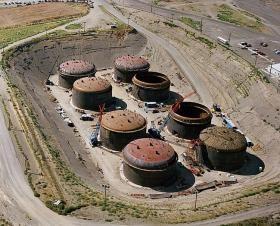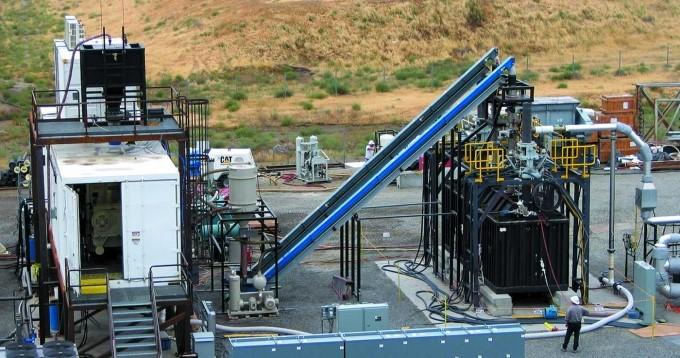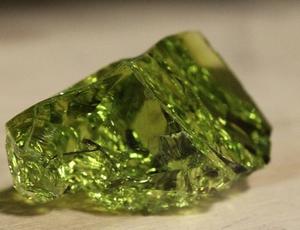The Challenge of Low Activity Waste

A critical element of the cleanup effort at the DOE Hanford site, in Washington State, is to find a safe and efficient way to handle the 53 million gallons of radioactive waste held in 177 underground tanks.
In 2003, The U.S. Department of Energy (DOE) invested $82 million in search of a supplemental technology to treat low-activity waste at the Hanford site. GeoMelt® was part of this multi-year project demonstrating the effectiveness of a bulk vitrification solution.
Design a fit-to-purpose GeoMelt® Vitrification system
With the intention of providing an effective solution to stabilize the radioactive waste, the GeoMelt® team went to work at Hanford in 2003 to design, construct and test the GeoMelt® In-Container Vitrification (ICV™) process.
Our GeoMelt® Vitrification system for Hanford low-level wastes has the ability to produce 50 tons of glass per batch. To date, GeoMelt® is the only vitrification system that has received a permit to construct and treat Hanford’s low-activity waste.

GeoMelt® mixes waste materials with glass formers and other additives. Heat is then applied to melt the soil and waste mixture, which dries into a solid glass form. During the Hanford project, 200 tons of glass were made at a rate of 50 tons per batch using GeoMelt®.
Through this project, the GeoMelt® team successfully:
Created over 200 tons of a durable and leach-resistant glass
Produced complete design of a GeoMelt® ICV™ facility to prove the capacity and flexibility of the technology
Verified that all off-gas emissions were effectively treated before release and met air-quality requirements
Confirmed the acceptability of the glass composition over a range of waste stream
Additionally, a 10-year study conducted by the DOE confirmed GeoMelt® to deliver lowest life cycle cost


